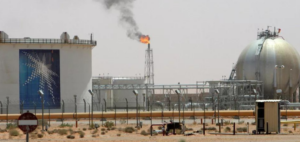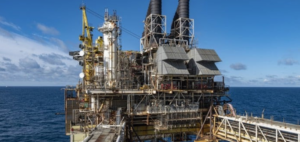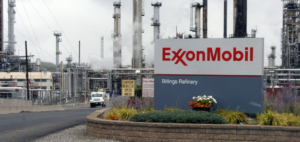Under increasing pressure, most oil and gas companies in the Western world are investing in green energy without abandoning fossil fuels, arguing that they must meet the demand for oil and gas or risk missing the goal of carbon neutrality in 2050.
Amidst a crowd of shareholders, voices chant “Go to hell!” The scene unfolded on Tuesday at Shell’sgeneral meeting in London, which was targeted by dozens of environmental activists. And history repeats itself elsewhere. After Shell, BP and Barclays, a bank accused of financing oil and gas development, TotalEnergies is also preparing for a stormy general meeting on Friday, as in 2022.
Since 2021, the International Energy Agency(IEA) has been urging the world to halt all new oil exploration projects to limit global warming to 1.5 degrees above pre-industrial levels. But new oil fields continue to open.
Not enough renewables
The oil and gas industry, especially in Europe, has certainly set targets to transform itself and reduce its greenhouse gas emissions. But the sector’s investment in renewables in 2022 represented less than 5% of its spending on fossil exploration and extraction, according to the IEA, which notes that it was only 1% in 2020. European companies are doing better, but even there, investment “is minuscule compared to their spending on oil and gas expansion,” says David Tong, spokesman for Oil Change International.
There is a lot of room for improvement. In addition to renewables, companies could direct “more spending” into technologies such as carbon capture and storage, biogas, hydrogen and low-emission fuels “that seem to be a good fit for their expertise,” says Christophe McGlade, head of the IEA’s energy supply unit. “This could really make things happen,” the expert adds.
From oil to gas
Most of the major companies’ efforts are focused on their direct emissions and those linked to the energy they consume themselves, which in total represent 15% or less of their carbon footprint (“scopes 1 and 2” in the jargon). They do this, for example, by controlling methane (natural gas) leaks or by stopping gas flaring.
BP has thus reduced its emissions by 41% in 2022 compared to 2019 and has announced a target of -50% in 2030, compared to 30-35% in 2020. Even the American companies, which have long been reluctant, are getting involved, but more timidly. ExxonMobil expects to reduce “company-wide” emissions by about 20% by 2030 compared to 2016. But the main issue is elsewhere: the indirect emissions linked to the combustion of oil in cars or fossil gas in heating (“scope 3”), which represent 85% or more of their carbon footprint. Their decrease mechanically implies to do without oil (and eventually, gas).
However, BP announced this year that it would increase its investments in low-carbon energy but as much in oil and gas, slowing the pace of its energy transition. An environmental outcry. Instead of reducing its indirect emissions from production by 35-40% from 2019 to 2030, BP is now looking at 20-30%. At TotalEnergies, indirect emissions are expected to remain at their current level by 2030, i.e. below 400 million tonnes per year, just below the 389 million tonnes reported in 2022.
While the group expects oil to account for only about 30% of its total sales within the decade (down from 55% in 2019), it will significantly increase its gas sales (50% of its sales by 2030). In fact, “the sector in 2030 will be more dominated by gas than oil,” says Moez Ajmi, energy expert at EY.
For Christophe McGlade at the IEA, one thing is certain: “If companies are banking on a continued increase in demand for oil and gas, they are implicitly assuming that we will not meet our net zero goals in 2050.”






















